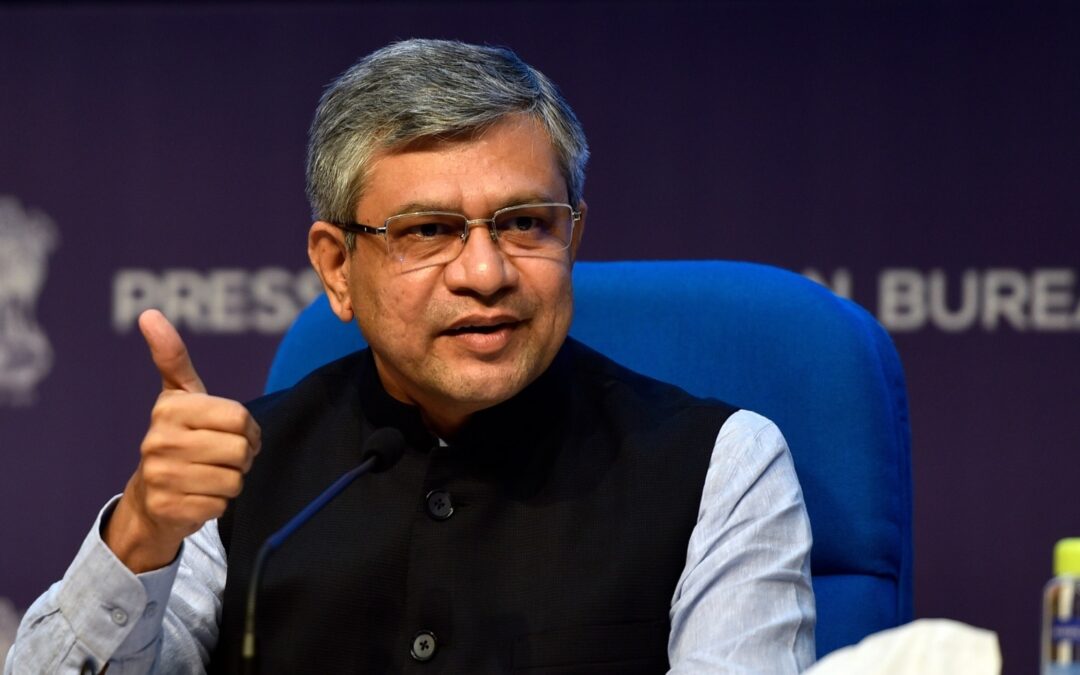Ashwini Vaishnaw, Union Information and Broadcasting Minister
While announcing the details of the scheme, Ashwini Vaishnaw, Union Information and Broadcasting Minister said, “Today the Union Cabinet has approved Unified Pension Scheme(UPS) for government employees, providing for the assured pension of 50 per cent assured pension, the first pillar of the scheme. Second pillar will be assured family pension. About 23 lakh employees of the central government would benefit from the Unified Pension Scheme(UPS).There will be an option for the employees to opt between National Pension Scheme(NPS) and UPS”
New Delhi: Making changes in the existing National Pension Scheme(NPS), the Union Cabinet, chaired by the Prime Minister Narendra Modi, today approved the Unified Pension Scheme (UPS) providing assured pension of 50 per cent of last drawn salary for the central government employees.
The scheme will be effective from April 1, 2025 and will benefit 23 lakh employees of the central government. The central government employees will be given the option of choosing between NPS and UPS.
Existing central government NPS subscribers will also be given the option to switch to UPS.
The state governments will also be given the option to opt for the UPS. If state governments opt for UPS, then the number of beneficiaries will be around 90 lakh.
While announcing the details of the scheme, Union Minister Ashwini Vaishnaw said, “Today the Union Cabinet has approved UPS for government employees providing for the assured pension of 50 per cent assured pension is the first pillar of the scheme…second pillar will be assured family pension. About 23 lakh employees of the central government would benefit from the UPS.There will be an option for the employees to opt between NPS and UPS.” .
“PM Modi constituted a committee under the chairmanship of Cabinet Secretary TV Somanathan.This committee held more than 100 meetings with different organisations and nearly all the states. There’s a difference between how PM Modi works and the oppositions works,” he added.
The salient features of the UPS are:
Assured pension: 50% of the average basic pay drawn over the last 12 months prior to superannuation for a minimum qualifying service of 25 years. This pay is to be proportionate for lesser service period upto a minimum of 10 years of service.
-Assured family pension: @60% of pension of the employee immediately before her/his demise.
-Assured minimum pension: 10,000 per month on superannuation after minimum 10 years of service.
-Inflation indexation: on assured pension, on assured family pension and assured minimum pension.
-Dearness Relief based on All India Consumer Price Index for Industrial Workers (AICPI-IW) as in case of service employees
-Lump sum payment at superannuation in addition to gratuity: 1/10th of monthly emoluments (pay + DA) as on the date of superannuation for every completed six months of service this payment will not reduce the quantum of assured pension.
According to the government the expenditure for arrears will be Rs 800 crore. The annual cost increase will be around Rs 6,250 crore in the first year.
Under the old pension scheme(OPS), pre-2004 government employees are entitled to 50 per cent of their last salary as pension, provided they have at least 20 years of uninterrupted service. Employees with 10-20 years of service receive a pro-rata pension, adjusted for inflation twice a year.
In contrast, the current NPS required that a minimum of 40 per cent of the accumulated contributions be invested in annuities to generate a monthly pension, which is not guaranteed and is subject to annuity returns. The remaining 60 per cent can be withdrawn tax-free. The proposed guaranteed pension option under NPS would modify these existing norms, providing more stability and predictability for future retirees.

